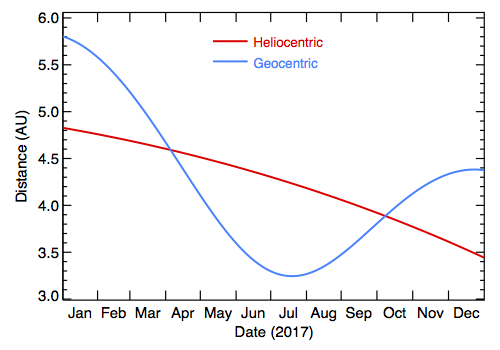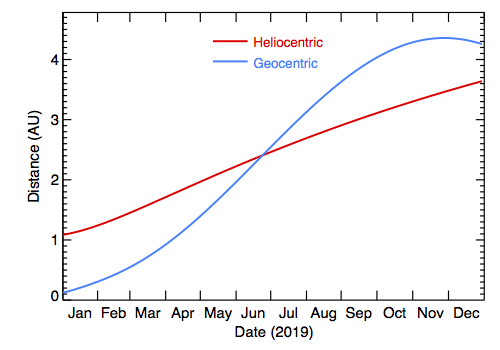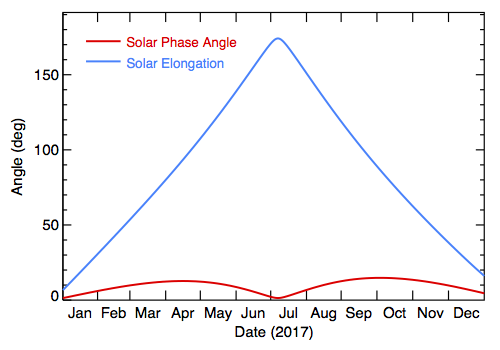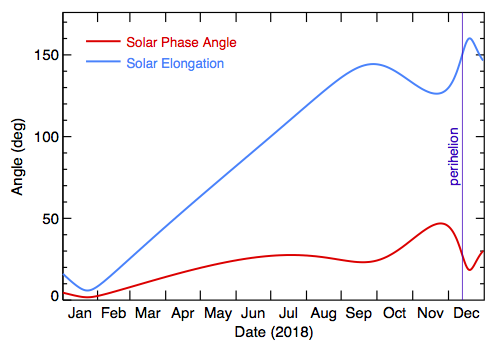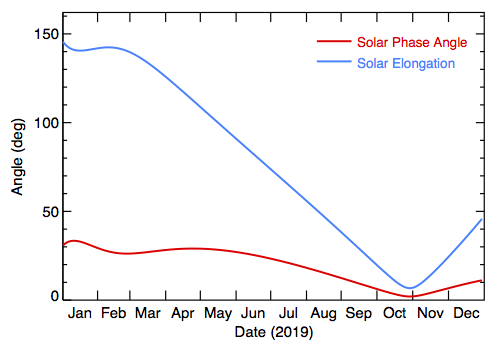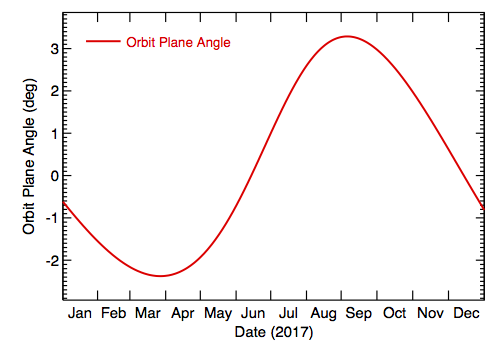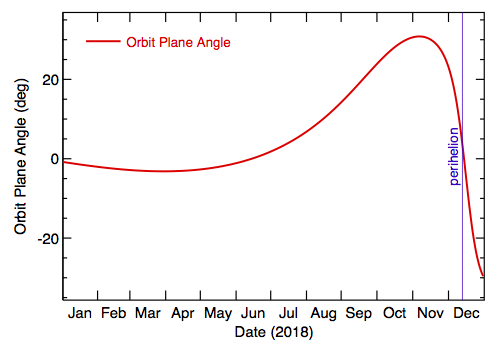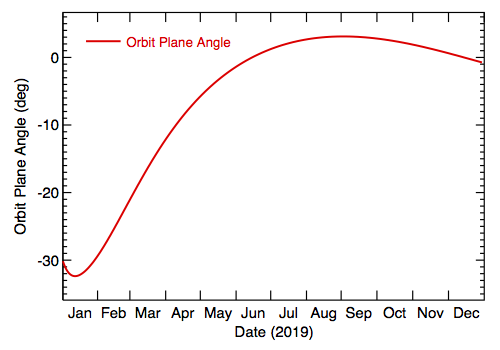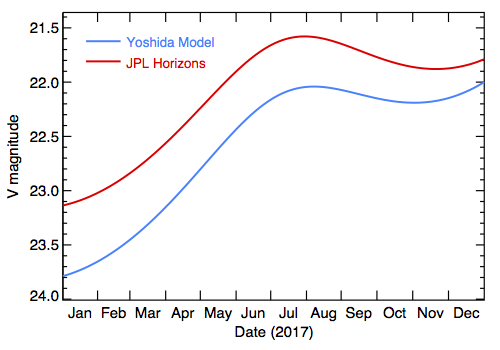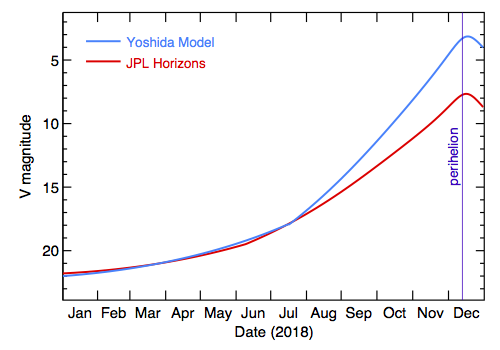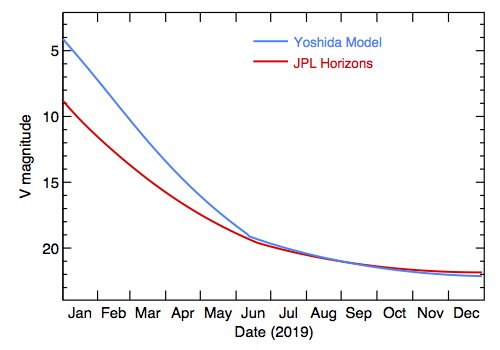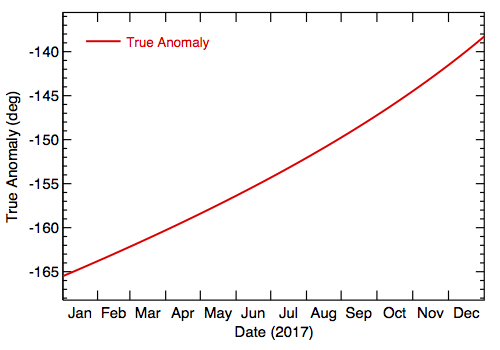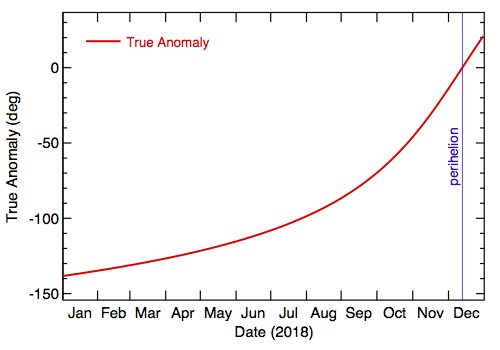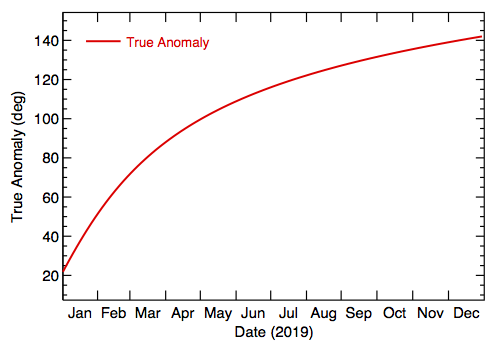Observing Geometry for the 2018 Apparition
The plots presented here are for general planning purposes. If you need more detailed values for the different geometric conditions, use the JPL Horizons routines to compute the values for your specific situation.
Heliocentric and Geocentric Distances
Solar Elongation and Solar Phase Angle
Orbit Plane Angle
Predicted Brightness
True Anomaly
Rise, set and visibility from different latitudes
The comet rises and sets at different times depending on the observer's latitude and longitude. The plots below provide information for approximating when the comet will be visible, and how long it will be observable from a given location on a given date.
Plots are given for latitude intervals of 5°, which is usually close enough for general planning purposes. Rise and set times are given in UTC for 0° longitude. For other longitudes, these times will be approximate to the local time, which should again be sufficient for basic planning purposes. Note, however, that there will be an offset (typically < 1/2 hr) for different longitudes, so more accuracy is needed, then you should obtain a more detailed ephemeris.
How to read these plots
We provide a more detailed description of the Rise/Set and visibility plots, and an example of how to read the information
here (PDF).
Comet visibility (TimeUp) and Rise/Set plots
